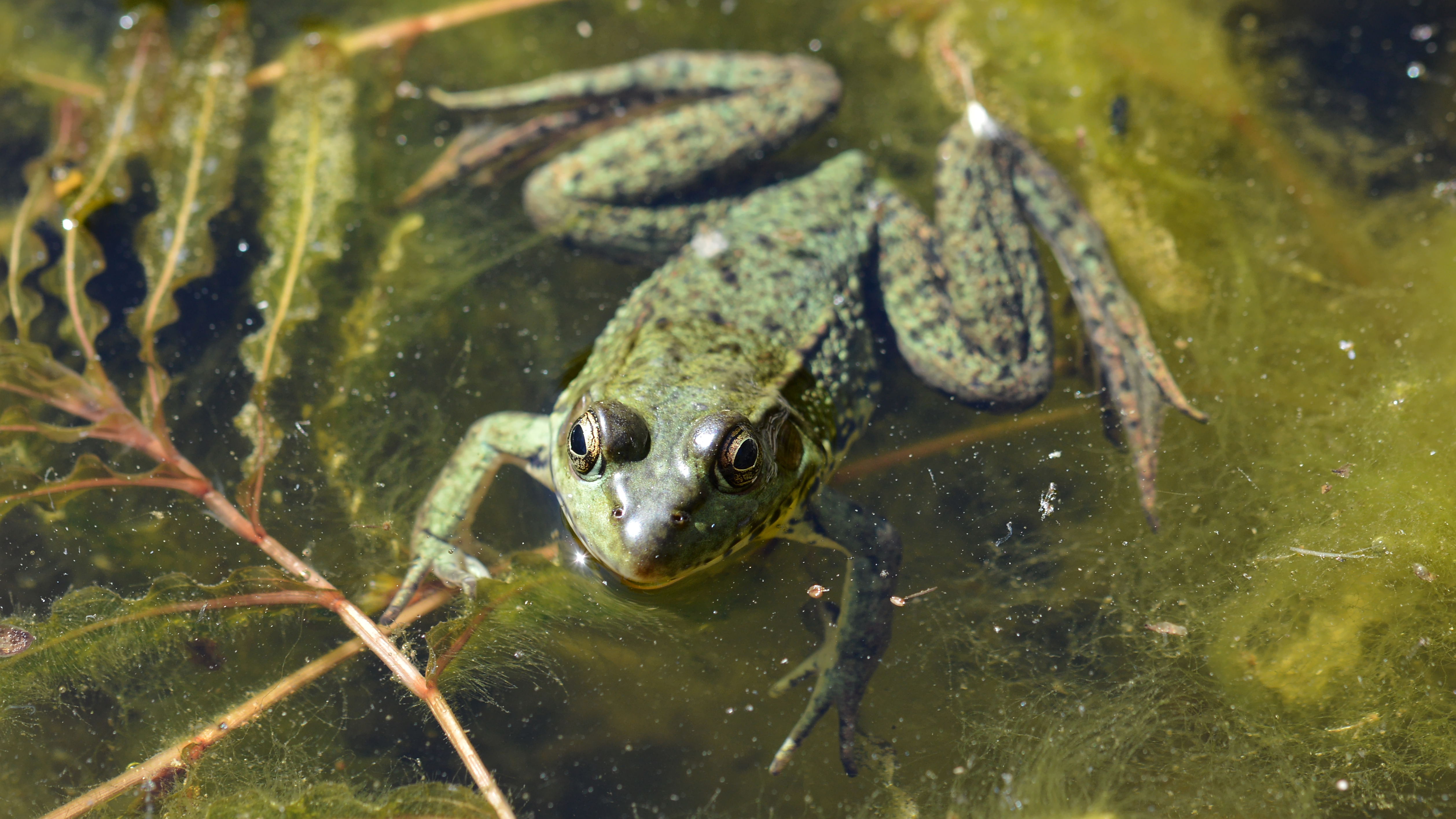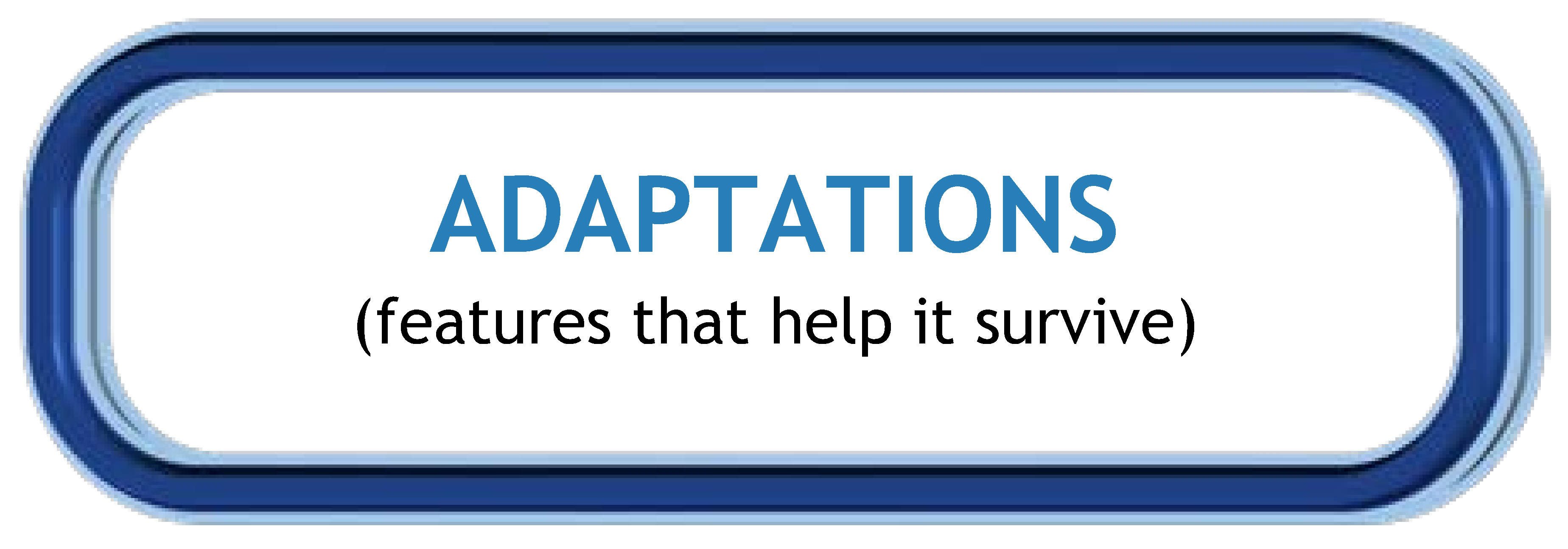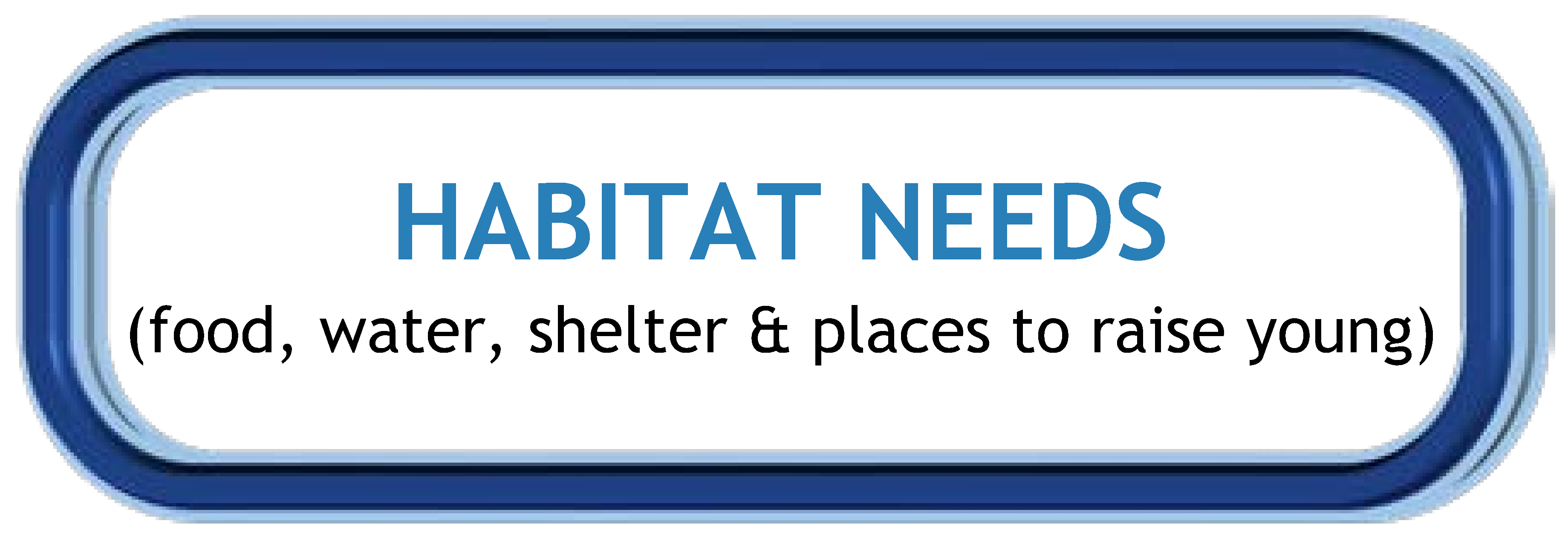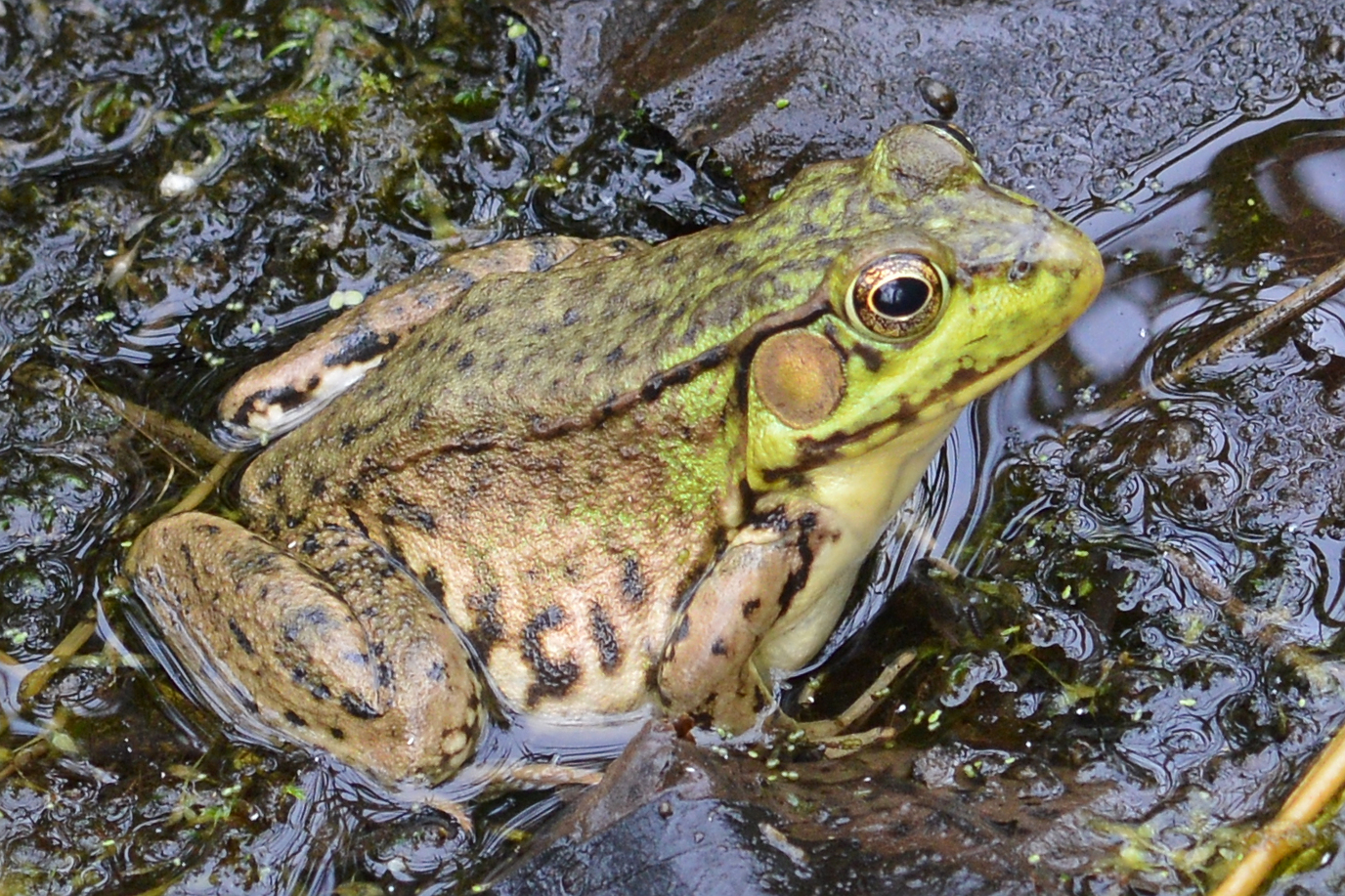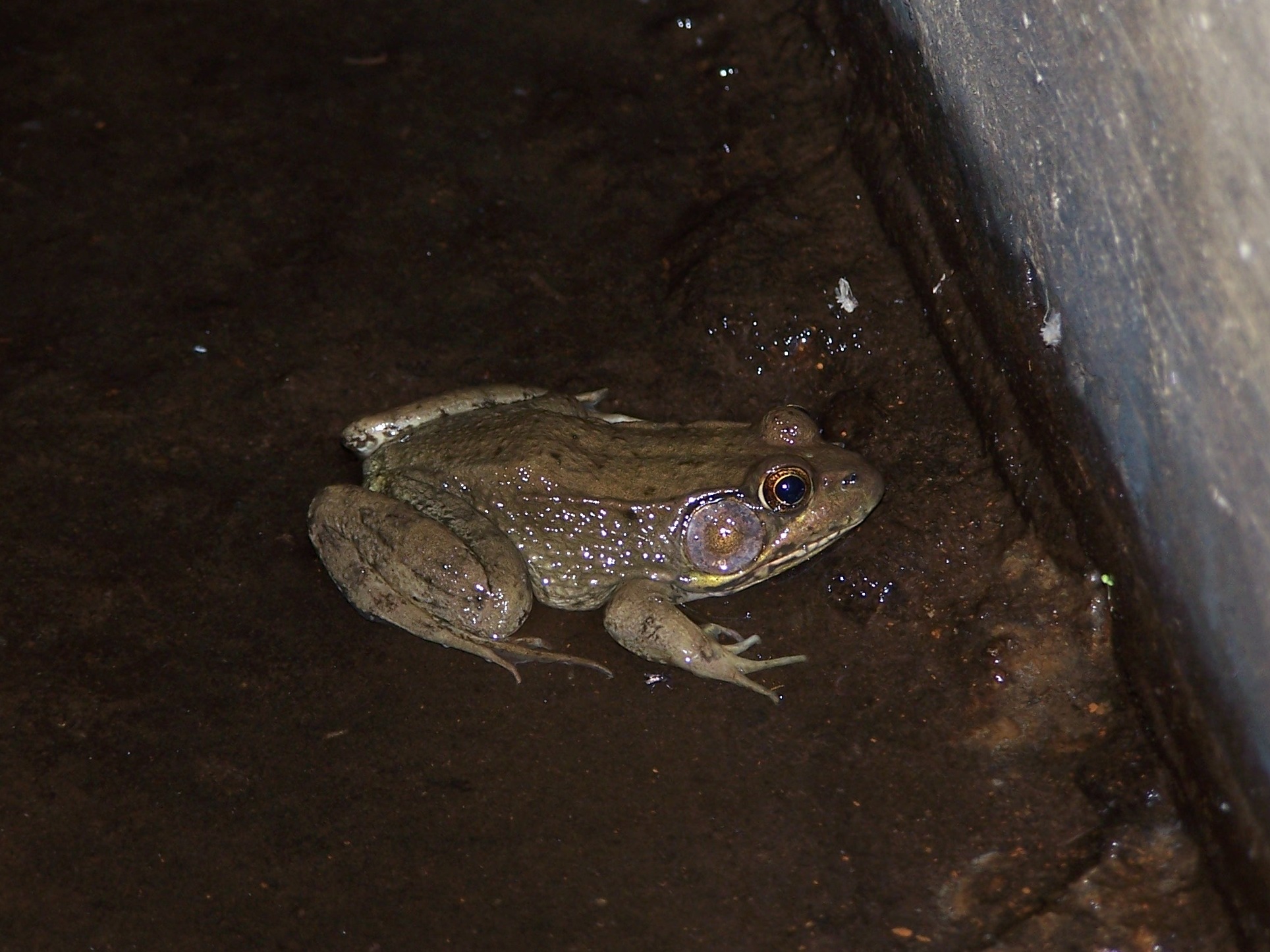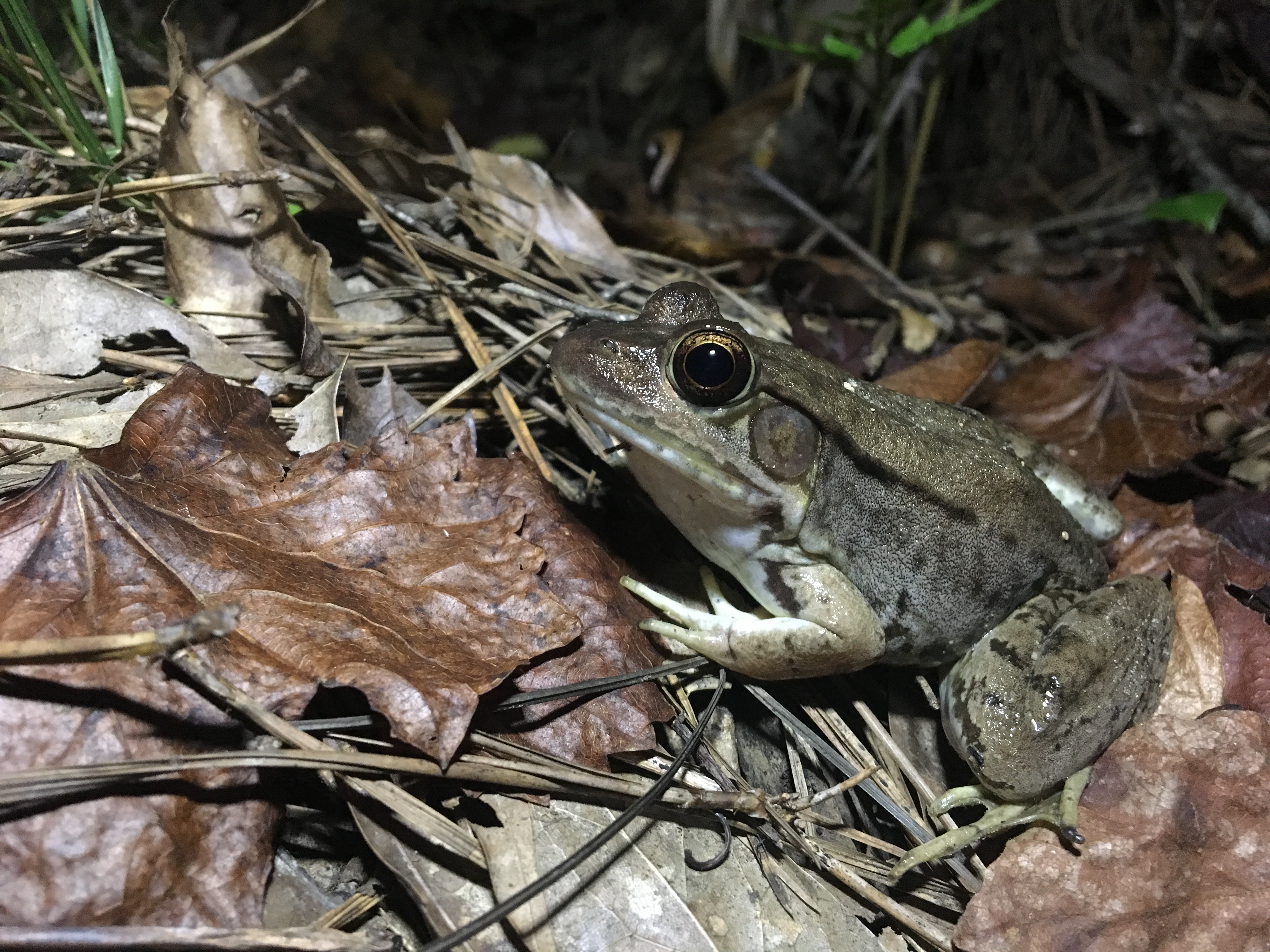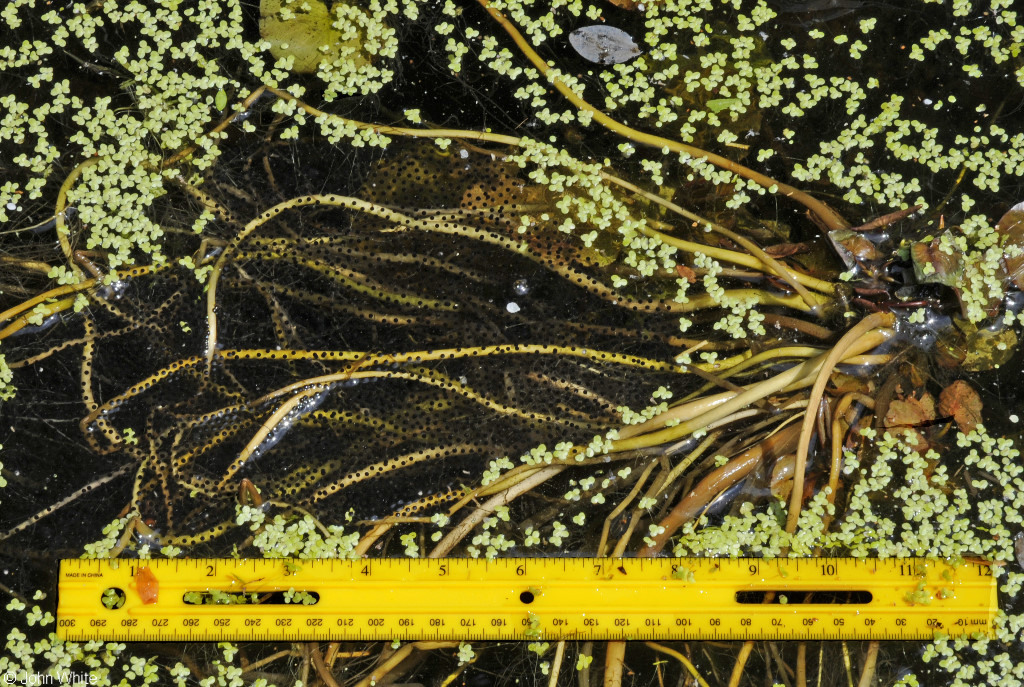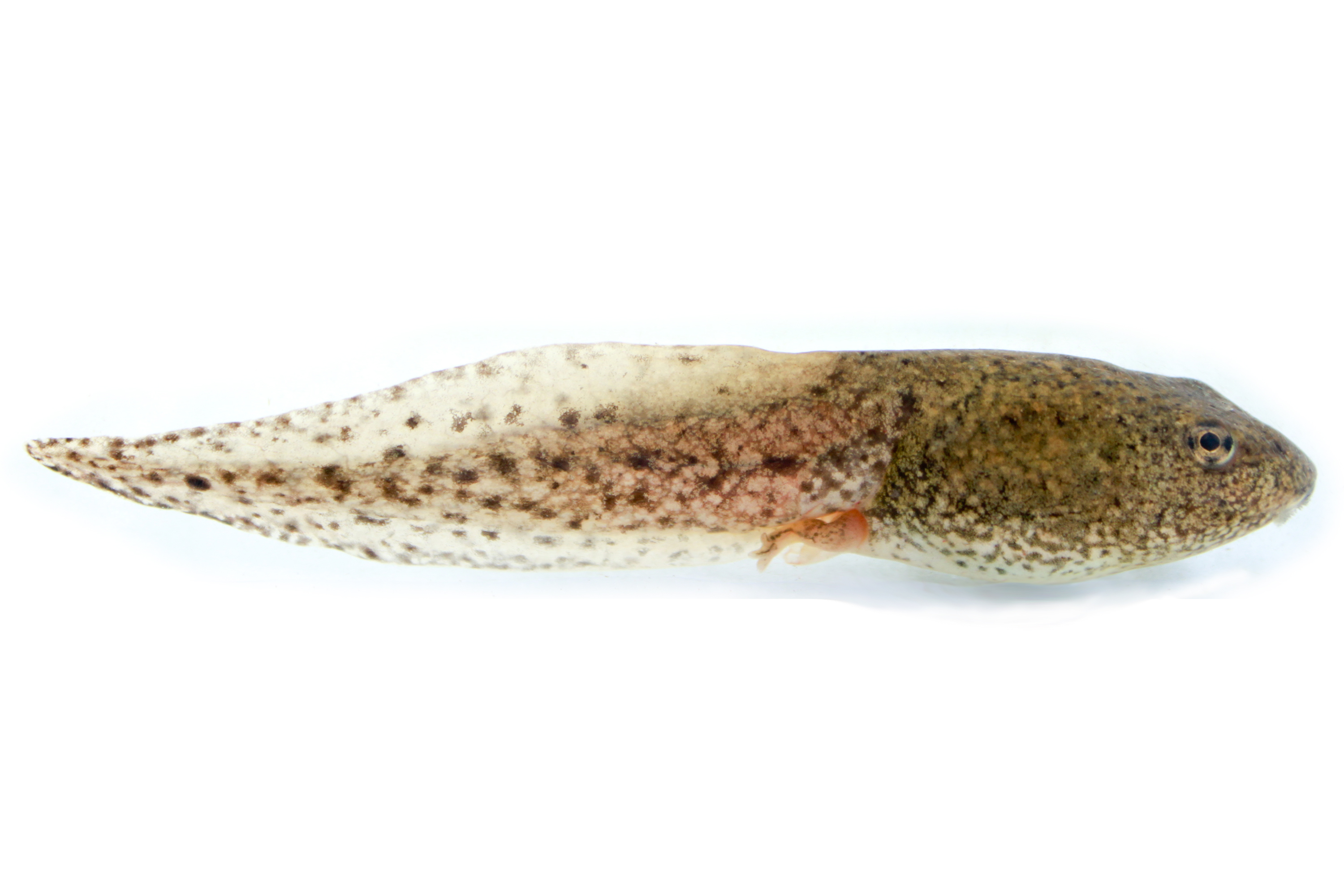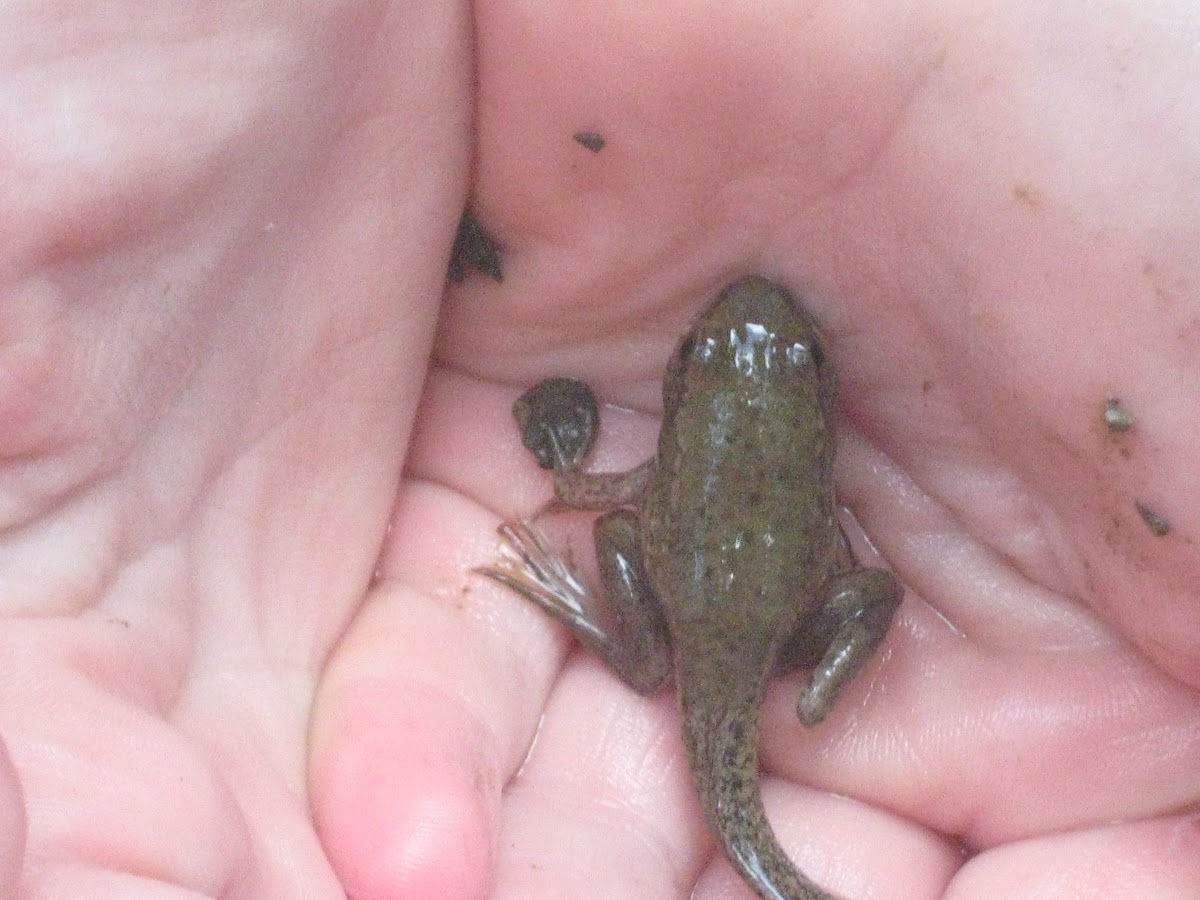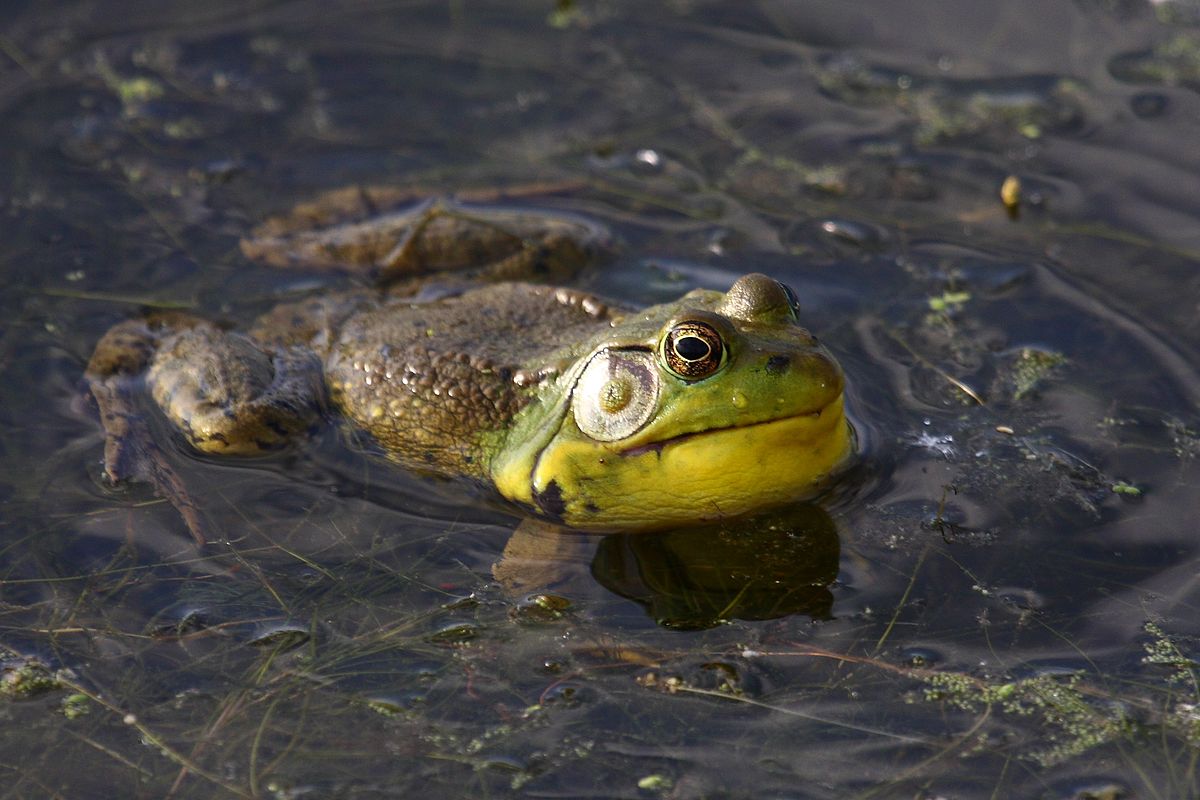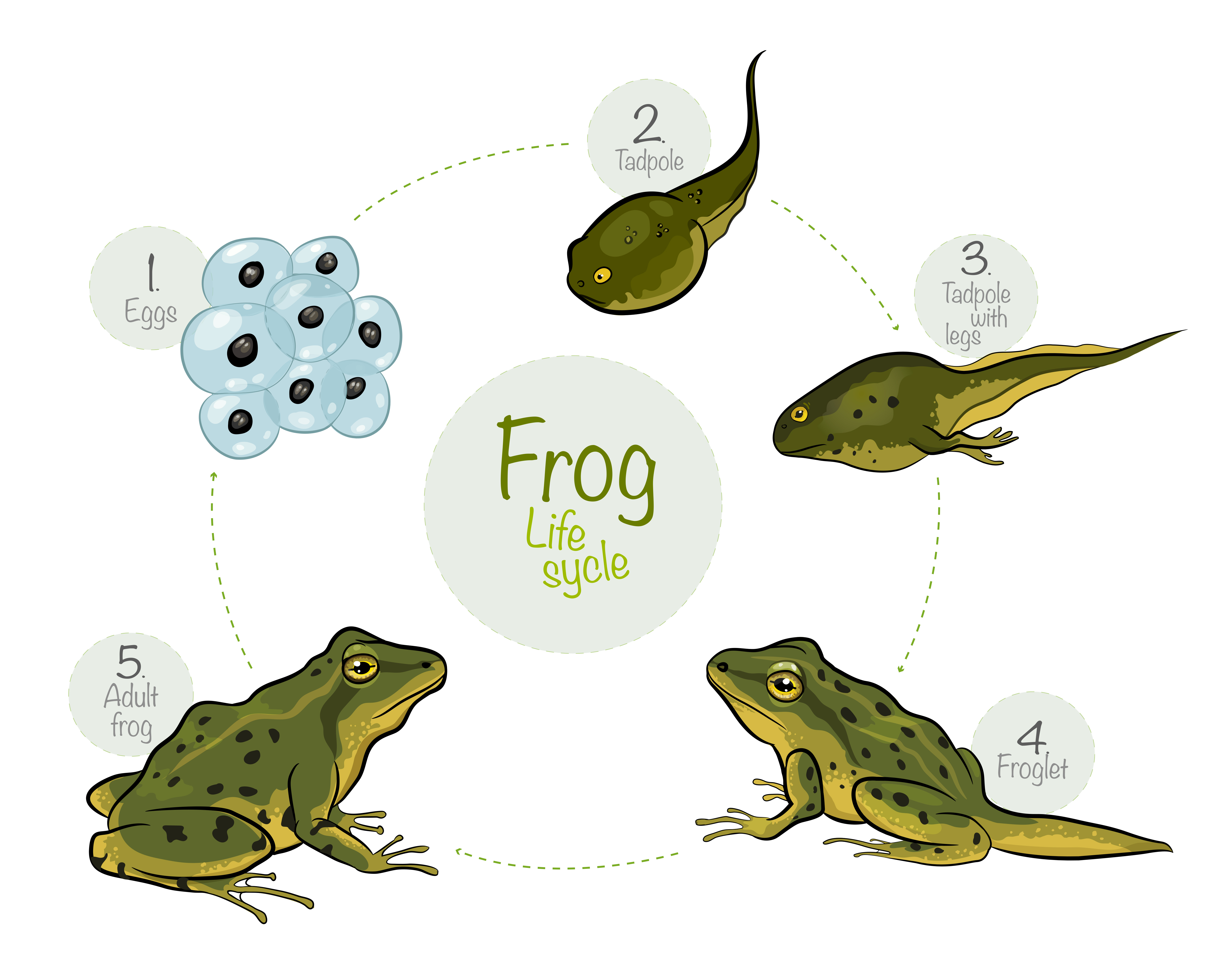Wonders of Wildlife: Bronze Frog
Bronze Frog
Other Common Names: Green Frog, Banjo Frog
Scientific Name: Lithobates clamitans
Found in Alabama: common statewide
Diet: Herbivore (eats plants) as tadpoles
Carnivore (eats animals) as adults
|
Bronze Frog in Habitat
Wikimedia - Ryan Hodnett
Click image to enlarge it |
Learn more about...
| CLASSIFICATION |
|
What type of animal am I?
- I am a vertebrate (an animal with a spine or backbone).
- I am cold-blooded, so I cannot control my body temperature.
- I do not have scales, feathers, or fur, so I have smooth skin.
- When I am a larva (tadpole), I breathe using gills, and when I am an adult frog, I breathe using lungs.
- I have 4 legs.
|
Scientists use basic traits to group animals into different taxonomic classes.
For a taxonomic classification chart comparing key traits of common backyard wildlife,
CLICK HERE! |
|
| The Bronze Frog is an AMPHIBIAN! |
|
Bronze Frog
Wikimedia - Ryan Hodnett
Click image to enlarge it
|
ADULT BRONZE FROG |
- Body ranges from 2.5 to 3.5 inches long
|
- Dark green or brownish yellow on back and white on belly
|
- Distinct raised ridges, called dorsolateral ridges, run from behind the eye along the back
|
| |
|
|
|
| MALE |
FEMALE |
- Throat appears more yellow in color
|
- Throat does not appear yellow in color
|
- Tympanum (eardrum) appears larger than the eye
|
- Tympanum (eardrum) appears around the same size as the eye
|
|
Male Bronze Frog
Jay Eubanks
Click image to enlarge it
|
Female Bronze Frog
Jay Eubanks
Click image to enlarge it
|
| |
|
|
|
| |
|
|
|
| EGGS |
TADPOLES (Larvae) |
FROGLETS |
| 1.5 millimeters in diameter |
Just over 3 inches in length |
Range from size of tadpole to adult size (2.5-3.5in) |
Bronze Frog Eggs
© John White - Virginia Herpetological Society
Click image to enlarge it
|
Bronze Frog Tadpole
Wikimedia - Brian Gratwicke
Click image to enlarge it
|
Bronze Frog Froglet
Project Noah - Caleb Steindel
Click image to enlarge it
|
| ADAPTATIONS |
| |
| PHYSICAL ADAPTATIONS |
| |
| Bronze frogs have specialized eardrums: |
- Frogs do not have ears like humans' ears. We have flexible (bendable), external ears on the outside of our head, and then down inside our ear we have eardrums (tympanums) that collects sound. (CLICK HERE for more details.)
- Frogs do not have external ears like ours, but you can see their tympanum (eardrum) as it is the round, circular shape on both sides of their head which allows them to hear.
- Frog calls are relatively loud, so their eardrums are connected to their lungs which protects their eardrums from becoming damaged by the sound.
- Different types of frogs have calls that sound different from one another. The size and distance between eardrums is also different based on characteristics of the call.
|
| |
| Bronze frogs have webbed hind feet: |
- The hind feet of bronze frogs are fully webbed, allowing them to easily move around in their aquatic (water) habitat.
|
| |
| Bronze frogs have tongues that help them capture prey: |
- The tongue of an bronze frog is long and is attached at the front of the mouth, allowing it to launch as far as possible to capture prey (animals they eat).
- Frog tongues are made of extremely soft tissues, giving them the ability to hold on to the prey.
- Their tongues are not "sticky" like a piece of tape. Instead, their saliva is able to convert back and forth between a liquid watery texture and a thick, sticky texture.
- When a frog is at rest, the saliva is watery and not sticky. As a frog sticks out its tongue to capture prey (animal that it eats), the liquid saliva that surrounds the animal becomes thicker and stickier, trapping the animal.
- Once the animal is inside the frog's mouth, the frog uses its eyes to push against the food item to help release it from the tongue, allowing the frog to swallow its food.
|
| |
| Bronze frogs have four teeth to hold their prey in their mouths: |
- Bronze frogs have teeth in the middle of the roof of their mouth and in the front of the top of the mouth.
- They use these teeth to keep their prey (the animals they eat) from escaping while they can swallow them.
|
| |
| |
| BEHAVIORAL ADAPTATIONS |
| |
| Bronze frogs are cathemeral: |
- They are active during the day and night (cathemeral).
|
| |
| Bronze frogs hibernate: |
- The bronze frog is cold-blooded and does not produce its own body heat like we do.
- During cold winter months, it protects itself by hibernating or becoming dormant as if it is in a deep sleep.
- Adult frogs hibernate in a burrow or cave-like structure that it builds in the mud at the bottom of a pond (or other water source) or under leaf litter.
- Many individuals spend their first winter hibernating as tadpoles, burying themselves in the mud at the bottom of a pond (or other water source).
- They emerge and become active when the weather is warm and food sources become available.
|
| |
| Bronze frogs comunicate with one another: |
- Bronze frogs communicate with one another through a variety of calls.
- During the warm summer months of the breeding season, males produce a unique banjo-sounding advertisement call, which is recognized by the females.
- To protect their territories, males produce a more aggressive call if a competitor is nearby.
- Both males and females produce an alarm call that is recognized by other bronze frogs warning them of the possible threats if a predator is nearby.
|
Male Bronze Frog Calling
Wikimedia - Cephas
Click image to enlarge it
|
| LIFE CYCLE |
| |
|
Frog Life Cycle
Wikimedia - Derek Ramsey
Click image to enlarge it
|
|
|
Metamorphosis is the process of physical change that some animals go through as they transform from a larvae into an adult. |
|
| |
| |
|
|
| Four Life Cycle Stages of the Bronze Frog |
| |
|
|
| 1. Egg: |
- Females lay around 3,000 small, soft-shelled eggs at a time.
- Eggs are laid in a jelly like clump on the surface of the water or hanging from aquatic vegetation.
|
| |
|
|
| 2. Tadpole: |
- Baby frogs that hatch from the eggs are called tadpoles.
- Once the larvae (tadpoles) emerge from the eggs, they are independent and can live in an aquatic (water) habitat as a tadpole.
- Tadpoles do not have legs.
- They do not have lungs to breathe like we do. They have gills like fish for breathing.
- They can remain in the tadpole form for 3-22 months before entering metamorphosis.
|
Bronze Frog Tadpole
Wikimedia - Brian Gratwicke
Click image to enlarge it
|
| |
|
| 3. Froglet: |
- As a tadpole undergoes metamorphosis (physical changes) from tadpole to adult, it grows hind legs and front legs as the tail begins to shorten.
- The gills will reduce as the lungs begin to enlarge.
- During this transition, the bronze frog goes through the froglet stage where they begin to resemble the adult but have not fully developed all of the adult features.
|
Bronze Frog Froglet
Project Noah - Caleb Steindel
Click image to enlarge it
|
| |
|
|
| 4. Adult: |
- Adult bronze frogs have fully formed legs and lungs and are able to live on land.
|
| |
|
|
| Life Span: |
- Average life span is unknown, but captive bronze frogs live up to 10 years.
|
NATURAL
Habitat Needs |
ADULTS |
YOUNG |
| Food |
- Feed on invertebrates (animals without a backbone) from land and water including snails, slugs, crayfish, spiders, flies, butterflies, moths, and caterpillars.
|
- Eat algae, diatoms (algae surrounded by hard, see through walls), and small plankton-like crustaceans.
|
| Water |
- As an amphibian, water is essential for keeping their smooth skin moist and hydrated.
|
- Tadpoles live in bodies of still or slow-moving fresh water.
|
| Shelter |
- Live in and around aquatic (water) habitats including swamps, ponds, wetlands, and marshes.
- If in danger, they hide in grassy areas by the water or by jumping into the water.
|
- Tadpoles develop in temporary bodies of water.
- Aquatic vegetation (plants) may provide a source of protection.
|
| Places to Raise Young |
- Deposit eggs in still or slow-moving sources of water.
- Tadpoles are independent from parents once they hatch.
|
|
BACKYARD
Habitat Needs |
ADULTS |
YOUNG |
| Food |
- Provide a shallow pond that will attract insects that lay their eggs in water like dragonflies, and they will eat the insect eggs and larva (baby insects) called macroinvertebrates.
- Provide aquatic (water) plants, terrestrial (land) plants, and habitat that attract insects and other invertebrates for the bronze frogs to eat.
- Do not spray pesticides or substances that might harm insect populations.
- See AWF's Frog Habitat Project Plan for a list of materials & plant suggestions.
|
- Provide a water source such as a shallow pond that is able to support algae and aquatic vegetation (plants).
|
| Water |
- Provide a still or slow-moving water source such as a shallow pond that is able to support algae and aquatic vegetation (plants).
|
| Shelter |
- Plant marginal plants around or aquatic plants in sources of water such as a shallow pond.
- If in danger, they are likely to seek shelter in grassy areas or by jumping in the water.
|
- Provide a still or slow-moving water source such as a shallow pond with aquatic vegetation.
|
| Places to Raise Young |
- Provide a source of still water such as a pond in which females can lay their eggs.
|
|
| ECOLOGICAL ROLE |
| |
|
| Animals play an important ecological role in the health of habitats and ecosystems. |
| |
|
Food Source: |
- Bronze frog tadpoles are a food source for aquatic animals including dragonfly larvae, leeches, fish, herons, and turtles.
- Adult bronze frogs are a food source for other frogs, turtles, snakes, wading birds, racoons, and mink.
|
| |
|
Insect Population Control: |
- Bronze frogs eat a lot of insects which helps control the insect populations by reducing the number of insects.
|
| |
|
Indicator Species: |
- The thin skin on adult bronze frogs and other amphibians makes them susceptible to absorbing toxic materials and contaminates present in the environment.
- A decrease in population size might indicate an increase in harmful chemicals in an ecosystem.
|
INFORMATION SOURCES FOR THIS SPECIES
.





 Wildlife Tag
Wildlife Tag
